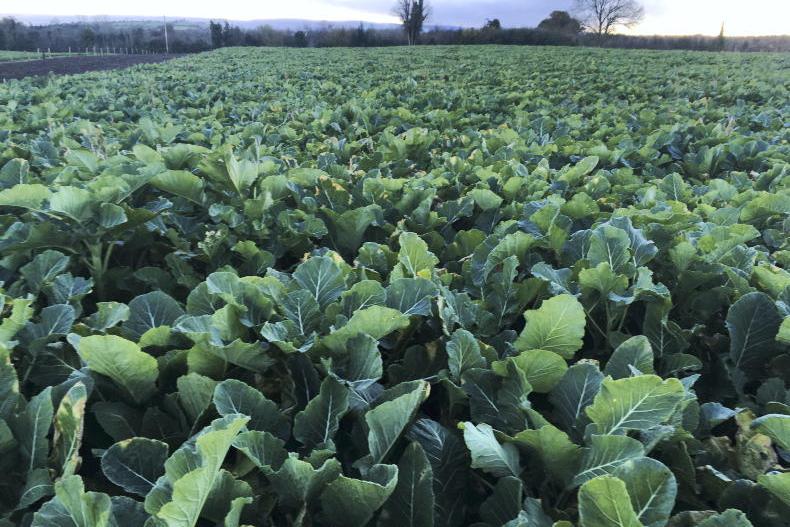Many farmers are thinking ahead to winter feed for 2022 and contacting their local tillage farmer may be a good idea.
Tillage farmers will be harvesting some winter cereals in July and, depending on rotations, may be able to plant a catch crop in these fields once crops have been harvested.
Many of these farmers may already plant catch crops and might switch the crops they grow to fodder crops and allow them to be grazed.
Earlier-planted crops are more likely to produce more biomass
Early contact is required with the tillage farmer to ensure seed is available and that these crops are planted quickly as it is a general rule with catch crops that a day in July is worth a week in August and a month in September. Earlier-planted crops are more likely to produce more biomass.
Forage rape, rape/kale hybrids and stubble turnips are some good options in these situations. Remember, these crops will be used over winter, so it is important to agree what type of stock will use these crops or if zero grazing will be allowed.
Forage contracts
Some farmers may be thinking of maize and beet as high-yielding forage crops. However, these crops also have a high fertiliser requirement, maize requires plastic to achieve high yields and machinery costs are also high.
Experience with these crops is desirable before planting.
It is important that tillage farmers considering growing these crops have a market for them.
It is also essential that if livestock and tillage farmers enter into agreements to grow these crops, or grow crops like forage rape, that both parties trust each other.
Tillage farmers planting for a livestock farmer will face high-input costs early in the season
Contracts can be drawn up and are useful to set the payment dates and to set out requirements for the site and target sowing and harvesting dates to aim for a high yield.
Tillage farmers planting for a livestock farmer will face high-input costs early in the season so should consider asking for a down payment or numerous payment dates to cover some of these costs.
Fast-growing grasses may also be considered over winter
Another thing to be considered is who will harvest the crop and pay for harvesting and transport. All of these details are needed before planting.
Fast-growing grasses may also be considered over winter. Westerwolds and Italian ryegrass are some options here.
Red clover silage can offer great value to tillage ground, but a longer-term agreement would need to be decided between tillage and livestock farmers in this situation to offer value to both sides.
This would help to get the most out of the red clover over a two- to three-year period and can benefit the soil it is grown on.
Whole-crop silage is another option to consider. There may be an opportunity to harvest cereal crops for silage, in some cases.










SHARING OPTIONS